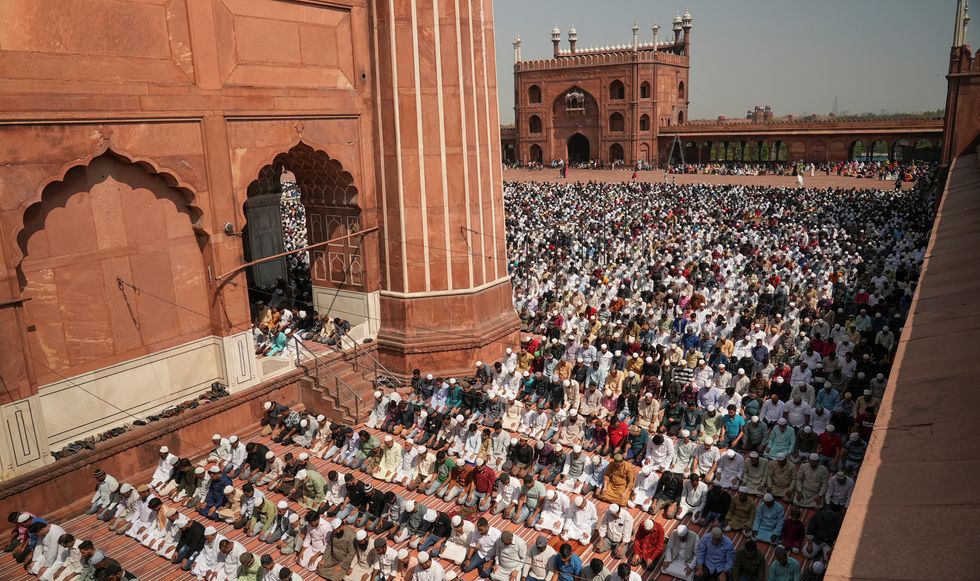
The population of India is projected to overtake China's in a major shift in the global order
Reuters/Niharika Kulkarni
Demographers estimate that India’s population will surpass China’s this month
Don't Miss
Most Read
Trending on GB News
The population of India is projected to overtake China's in a major shift in the global order with the number of people expected to reach 1.429 billion by the end of the year.
The United Nations claim the rising population means it’s likely to keep its economy growing as India play a bigger role in global affairs but will continue to struggle with poverty and a lack of jobs.
India’s population is predicted to keep growing for the next four decades, peaking at nearly 1.7 billion in 2063.
According to government data, China’s population declined last year for the first time since the 1960s and is projected to shrink rapidly.

Commuters crowd on a platform as they wait to board suburban trains at a railway station in Mumbai
Reuters/Niharika Kulkarni
India has an increasingly expanding working-age population, with 610 million people under age 25, and relatively few older people to care for.
It will be the only nation with a big enough labour force to take on China as the world’s factory floor - although poor infrastructure and investment rules could stand in the way.
China’s fertility rate, the number of children a woman has over her lifetime, was recorded at 1.18 last year, 40 years after the country implemented its one-child policy.
India’s rate now stands at 2.0 and with a large pool of women of childbearing age, the population will keep growing for decades.
“We are on the cusp of maybe the most momentous population transition of the last 200 years,” Irfan Nooruddin, director of the South Asia Center at the Atlantic Council, a Washington-based think tank told The Wall Street Journal.
“The center of gravity of where the world is, it’s been shifting for a while, but it’s about to be cemented.”
According to a State Bank of India report, India recently overtook Britain as the world’s fifth-largest economy, and could surpass Germany and Japan to become the third-largest behind the U.S. and China in 2029.
However, India also has the highest number of people living in poverty in the world with 228.9 million or 16.4 per cent, according to U.N. data, although the numbers have fallen.

Some economists have warned that India could face internal instability
Reuters
Some economists have warned that India could face internal instability if it doesn’t create more economic opportunities.
The chief of Rashtriya Swayamsevak Sangh, a right-wing Hindu nationalist organisation with close ties to Prime Minister Narendra Modi’s ruling party, called last year for a “comprehensive” population control policy.
Mahesh Vyas, the Centre for Monitoring Indian Economy's chief executive explained that out of the 20 million people who grow old enough to enter the labour market every year, only about eight million look for work.
With so many people entering the workforce, “you have to run twice as fast so you can stay in the same place,” said Ashoka Mody, an economics professor at Princeton University.
Creating jobs, he added, “is a problem the Indian economy has never solved.”







